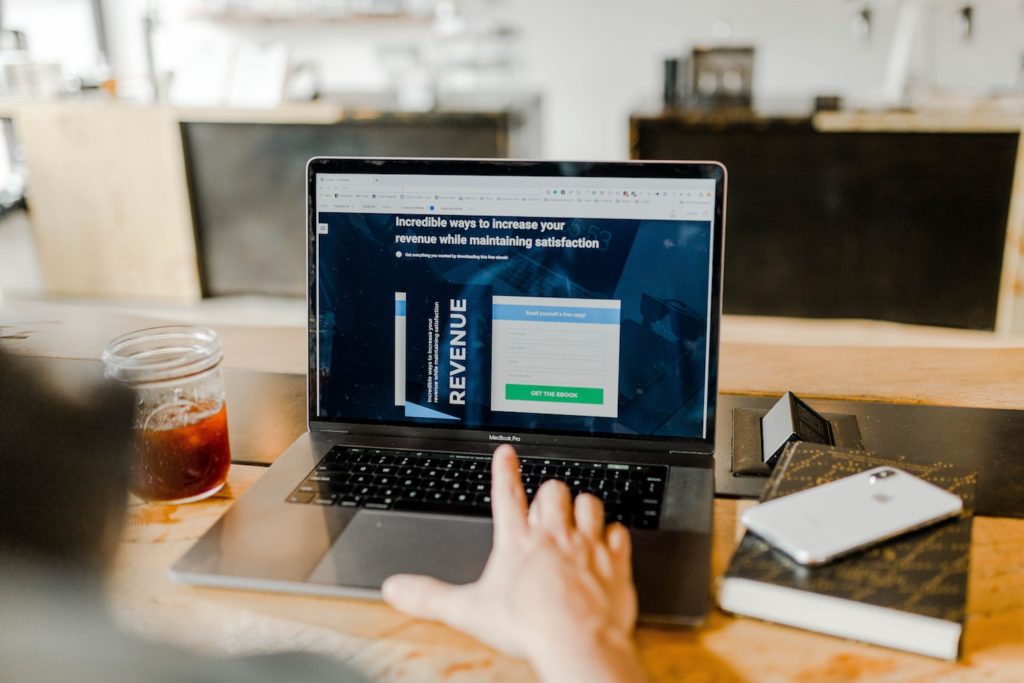The importance of an effective landing page is not new. But it certainly seems to have gained more traction in the past few years as attention span continues to decrease, and content, choices and distractions all continue to increase across the internet.
In our last blog post, we gave a brief intro into CRO and why it’s an essential strategy to implement in your business. Below, we’re diving deeper into landing pages and Landing Page Optimization, as they are crucial aspects of your broader CRO strategy.
Creating an effective and properly optimized landing page can increase conversions – whether sales, signups, or otherwise. So let’s talk more about why you should use them, if landing page building software could be right for your business, what belongs on a well-performing landing page, and more!

Why You Should Be Using Landing Pages
As we just mentioned above, landing pages are an important part of the CRO strategy because they are one of the pieces of the puzzle you can use and continue to optimize in order to significantly increase your conversions.
Overall, they have been proven to be more effective than your website’s home page, and most other top level pages of your website, when it comes to actual conversions. This is because while most websites are used to tell everything about a business, share all products available, provide an entryway to blog posts, resources, social media widgets and more (which is not exactly conducive to holding your audience’s goldfish-sized attention span), a landing page does just the opposite. A great landing page is focused and singular-minded.
When designing a landing page, you should have one very specific goal you are trying to accomplish…without unnecessary links and navigation to other areas of your website…without other offers competing for their attention…without extra photos or content that distract from that one goal.
You should be using landing pages because they can be one of the best salespeople on your team. Imagine getting a sales call from someone spending time telling you about everything under the sun when it comes to their business, then quickly asking, “So, are you ready to buy?” Contrast that with one that focuses on the very best product or service for you, the features and benefits it will provide, stories of how it changed other people’s lives who are just like you, and even a limited time discount on that specific offer.
A website is still necessary for the big picture of your business, but effective landing pages are essential for converting visitors to leads or customers and especially when connected to strategies like your PPC and social media campaigns.

Should You Invest in Landing Page Software?
One of the reasons we believe the focus on high-converting landing pages has taken center stage more recently is the increase in user-friendly landing page building software. These have been created to, hopefully, simplify the page building process using CRO best practices (particularly if you use a pre-built template).
The way it used to be done, which is still a viable option for some, was to use your website’s standard page template to create a page that accomplishes your one specific goal, like we discussed above.
A few potential problems arise with this method. Creating a page from the ground up can be costly, depending on your website platform’s page building capabilities. Not all are simple drag and drop with clear containers set up for images, text, etc. It’s very likely you’ll spend time and money working with a designer and developer to get it built properly.
Another reason this isn’t our favorite way of building a landing page is because your website was most likely not originally built for one-page, conversion-focused content. To name just one example, your top navigation bar. This is, of course, necessary for navigating around your main website. But effective landing pages have very few links, and generally do not contain navigation. This is on purpose, to keep the visitor focused on the conversion goal at hand. So your standard page template within your website may not be as effective as building a page in a landing page builder.
Keep in mind, however, just because the software provides pre-built templates, doesn’t mean you won’t need some level of support or expertise at some point. While the drag and drop features are typically user-friendly, you’ll want to ensure the visual experience of the page still falls in line with the look and feel of your website and branding. It’s also important to use best practices for your imagery, CTA buttons, and conversion-based copywriting. (We’ve seen some pretty horrendous landing pages with terrible conversion rates when using landing page builders but without a knowledge of design and CRO.)
There are many options to choose from, at different price points, with differing levels of support, pre-built templates and ease of use. A few of our favorites are Unbounce, LeadPages and ClickFunnels. (Note: we have an affiliate account with ClickFunnels, should you choose to click on our link and start using the platform, but we use and recommend other platforms all the time because we believe different tools can be right for different client’s needs.) The tool you choose depends on what you’re trying to accomplish, whether you need built in follow up tools, and the past experience and preferences of your team.
Even as an agency with full custom design and development capabilities, using a landing page builder allows us to build beautiful and effective pages, keeping costs lower and passing those savings on to the client!
Never Stop Optimizing
It’s not enough to build a landing page, you also need to optimize it. I know, I know, is the job of a marketer EVER done? The answer is simply, nope! (and we’d say to be wary of anyone who tries to sell you a set-it-and-forget-it type of strategy…but I digress.)
Your newly built, beautiful landing page is hopefully part of a larger strategy to accomplish the specific goal we keep talking about. This means you won’t build a page and just hope someone stumbles upon it. No, you’ll use it as a destination for traffic, whether paid, or organic. And since you have a clearly defined goal, you’ll be able to understand whether or not that goal is being met.
Remember when I mentioned landing pages typically don’t have navigation links on them? Because of this, your landing page might be the only thing the visitor sees, making it very important to continue to optimize once you see if the traffic you’re sending there is converting.
A/B testing is at the heart of CRO, and good landing page builders have a level of A/B testing built right in. Assumptions you’ve made and questions you’ve had in the past regarding the best headline or call to action, or even button color are all elements you can let your audience decide rather than constantly guessing. It’s a very reassuring process. To not optimize would be wasting resources spent designing and building the page, as well as the resources spent driving traffic to it.
There are key components of an effective landing page, and it is important to A/B test these components, specifically, during your optimization process!
These are, in no particular order :
- An attention-grabbing Heading
- Conversion-focused subheadings
- Beautiful, high resolution and relevant imagery
- A compelling offer and how they will benefit from it
- One prominent Call to Action – (Remember, while there should be a main singular CTA, it should be repeated down the page no matter where they are while scrolling.)
Conclusion
While most people know about the importance of landing pages, we still see many businesses focusing their time and money on driving traffic. This is essential for getting eyes on your offer, but without a concentrated effort on building and optimizing landing pages, the chances of converting the traffic you’re spending money on will be significantly less.
So as you think through your business offerings now and in the future, remember landing pages and Landing Page Optimization are key tenets of an effective CRO strategy!

